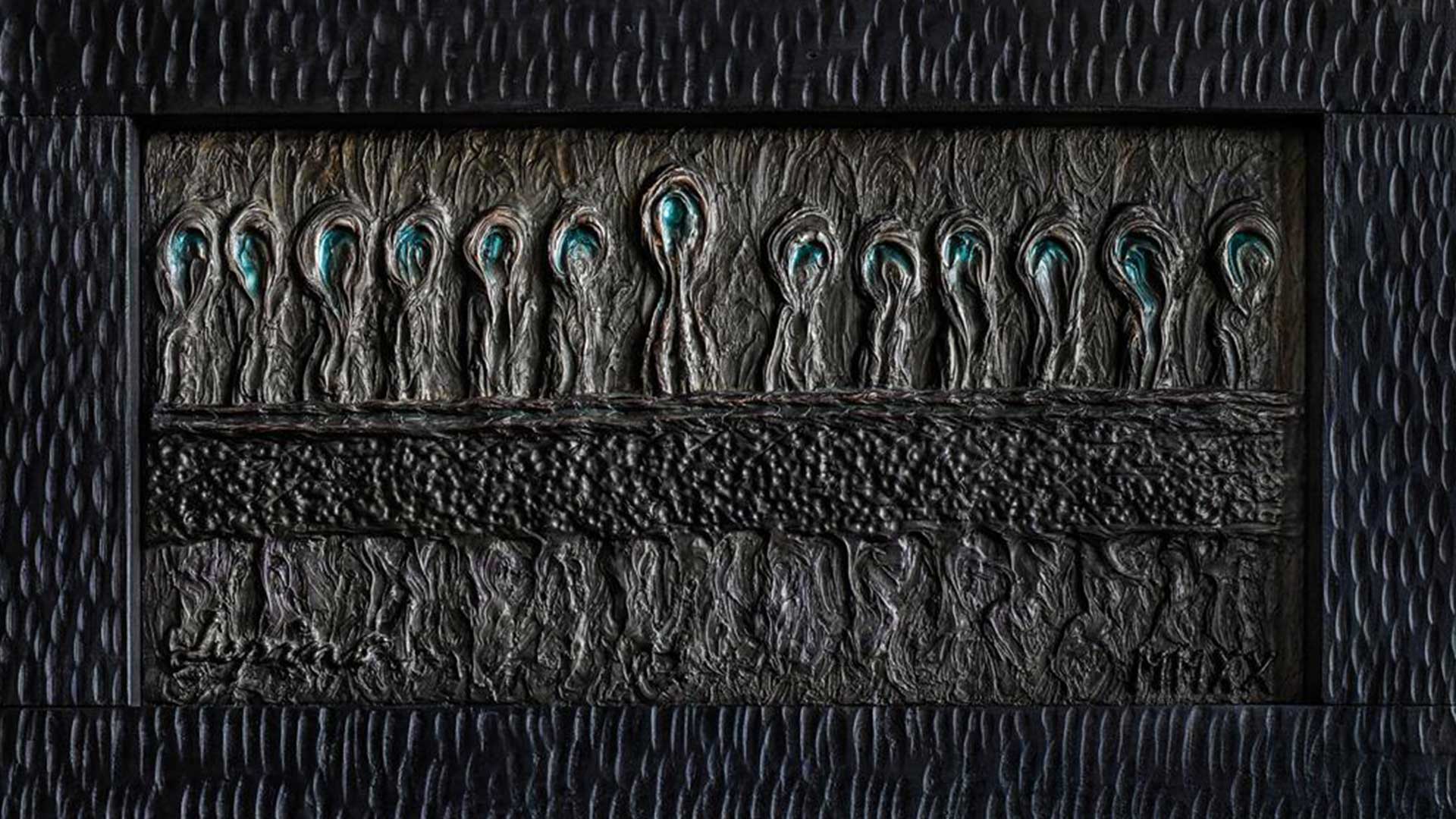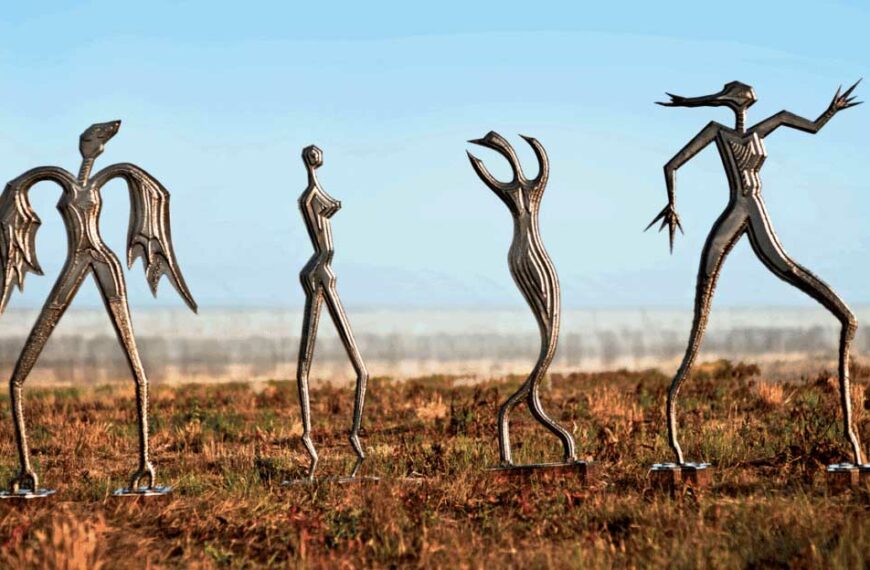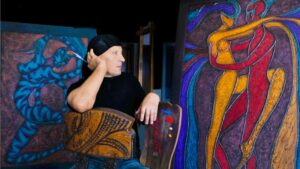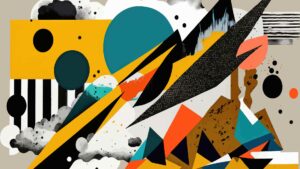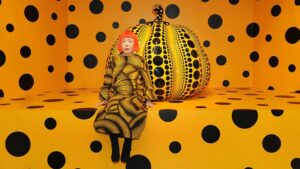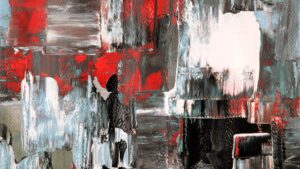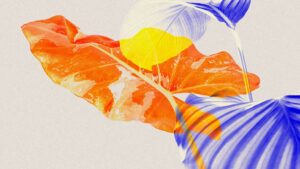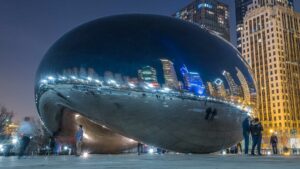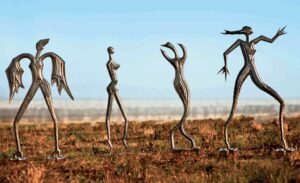Modern art styles have revolutionized the way we perceive and appreciate art. From the vibrant brushstrokes of Impressionism to the thought-provoking concepts of Conceptual Art, each style offers a unique perspective and a rich visual experience. In this article, we will delve into the world of modern art styles, exploring their key characteristics, influential artists, and notable works. Whether you’re a seasoned art enthusiast or simply curious about the art world, this visual exploration will broaden your understanding and appreciation of modern art.
What readers will learn by reading this article:
- The key characteristics, techniques, and themes of various modern art styles such as Impressionism, Expressionism, Cubism, Surrealism, Abstract Expressionism, Pop Art, Minimalism, Conceptual Art, Street Art, and Contemporary Art.
- The influential artists associated with each art style and their notable works.
- The ongoing evolution and experimentation within modern art styles and the diverse range of artistic styles and mediums in contemporary art.
Impressionism
Impressionism emerged in the late 19th century as a rebellion against the traditional art conventions of the time. This art style sought to capture fleeting moments and the effects of light on the subject. Impressionist artists aimed to convey the essence of a scene rather than its intricate details. The emphasis was on the artist’s personal perception and interpretation of the subject.
Key characteristics of Impressionism include loose brushstrokes, vibrant colors, and an emphasis on capturing the play of light and shadow. Artists often painted en plein air (outdoors) to capture the changing qualities of natural light. Common themes explored in Impressionist works include landscapes, cityscapes, and everyday life.
Some of the most influential Impressionist artists include Claude Monet, Pierre-Auguste Renoir, and Edgar Degas. Monet’s “Water Lilies” series, Renoir’s “Dance at Le Moulin de la Galette,” and Degas’ “The Star” are just a few examples of their notable works. These artists not only captured the beauty of their surroundings but also introduced a new way of seeing and experiencing art.
(Reference: The Artling – Contemporary Art Styles)
Expressionism
Expressionism is an art style that delves into the emotional and psychological aspects of the human experience. It emerged in the early 20th century as a response to the rapid changes and turmoil of the modern world. Expressionist artists sought to convey their innermost feelings and thoughts through their works, often using exaggerated and distorted forms.
Key characteristics of Expressionism include bold colors, energetic brushwork, and a strong emphasis on conveying emotion. Artists aimed to evoke a visceral response from the viewer, challenging traditional notions of beauty and realism. Themes explored in Expressionist works often revolve around the human condition, social commentary, and introspection.
Prominent Expressionist artists include Edvard Munch, Ernst Ludwig Kirchner, and Wassily Kandinsky. Munch’s iconic painting “The Scream,” Kirchner’s “Street, Berlin,” and Kandinsky’s “Composition VII” are prime examples of their powerful and emotionally charged works. Expressionism continues to inspire artists to explore the depths of human expression and the complexities of the human psyche.
(Reference: StudioBinder – What is Modern Art)
Personal Story: Embracing Expressionism in Times of Turmoil
In the section discussing Expressionism as an art style, I would like to share a personal story that highlights the emotional and psychological aspects of this movement.
During a particularly challenging period in my life, I found solace and healing through the art of Expressionism. I had recently gone through a difficult breakup and was grappling with a deep sense of sadness and confusion. It was during this time that I discovered the works of Edvard Munch, a renowned Expressionist artist known for his introspective and emotionally charged paintings.
One painting, in particular, resonated with me deeply. Munch’s “The Scream” captured the intense anguish and existential dread that I was feeling at the time. The distorted face, the vibrant colors, and the swirling brushstrokes perfectly encapsulated the turmoil within me. It was as if Munch had captured my own inner scream on canvas.
Inspired by Munch’s ability to convey such raw emotion, I decided to explore Expressionism as a form of self-expression. I picked up a paintbrush and began to pour my own emotions onto the canvas. Through bold brushstrokes and vibrant colors, I found a way to externalize my inner turmoil, to give it a tangible form.
As I delved deeper into the world of Expressionism, I discovered other influential artists like Ernst Ludwig Kirchner and Wassily Kandinsky. Their works, with their distorted figures and abstract forms, spoke to the depths of my own psyche. Through their art, I began to understand that my emotions were not isolated, but rather a part of the human experience.
Expressionism became my refuge, a space where I could confront and explore my own emotions without judgment. It allowed me to embrace the messiness of life and find beauty in the chaos. Through the act of creating art, I discovered a sense of catharsis and a newfound appreciation for the power of self-expression.
This personal journey with Expressionism taught me that art has the ability to transcend words and touch the depths of our souls. It showed me the transformative power of art in times of turmoil, and the importance of finding our own unique voice through artistic expression.
Cubism
Cubism, led by Pablo Picasso and Georges Braque, was a revolutionary art movement that aimed to break away from traditional conventions of representation. It emerged in the early 20th century and introduced a new way of perceiving and depicting reality. Cubist artists sought to represent objects from multiple viewpoints, deconstructing and reassembling them into abstract geometric forms.
Key characteristics of Cubism include the fragmentation of forms, the use of multiple perspectives, and the incorporation of collage elements. Artists aimed to depict the essence of the subject rather than its realistic representation. Cubism challenged the notion of art as a window to reality and opened up new possibilities for artistic expression.
Picasso’s groundbreaking works such as “Les Demoiselles d’Avignon” and “Guernica” exemplify the revolutionary nature of Cubism. Braque’s “Violin and Palette” and Juan Gris’ “The Bottle of Anis del Mono” further showcase the innovative approach of this art style. Cubism had a profound influence not only on painting but also on sculpture and architecture.
(Reference: Britannica – 10 Modernist Art Movements)
Surrealism
Surrealism emerged in the 1920s as a response to the chaos and irrationality of the post-war world. This art style sought to explore the realm of the subconscious and the dream-like imagery that resides within it. Surrealist artists aimed to liberate the imagination, combining seemingly unrelated objects and ideas to create strange and thought-provoking compositions.
Key characteristics of Surrealism include juxtaposition, unexpected combinations, and meticulous attention to detail. Artists often used techniques such as automatism and frottage to tap into the unconscious mind. Surrealist works often convey a sense of mystery, ambiguity, and a touch of the bizarre.
Salvador Dalí, René Magritte, and Max Ernst are among the most notable Surrealist artists. Dalí’s “The Persistence of Memory,” Magritte’s “The Treachery of Images,” and Ernst’s “The Elephant Celebes” showcase their mastery of the Surrealist aesthetic. Surrealism continues to captivate viewers with its enigmatic and thought-provoking imagery.
(Reference: The Artling – Contemporary Art Styles)
Abstract Expressionism
Abstract Expressionism emerged in the mid-20th century as a reaction against the conformity and rationality of the post-war era. This art style is characterized by its non-representational and spontaneous nature. Abstract Expressionist artists aimed to convey their inner emotions and experiences through bold brushstrokes, gestural marks, and expressive colors.
Key characteristics of Abstract Expressionism include large-scale canvases, the use of unconventional materials, and a focus on the act of painting itself. Artists embraced the concept of “action painting” and believed that the process of creation was as important as the finished artwork. Themes explored in Abstract Expressionist works range from the personal to the universal, often conveying a sense of raw emotion and energy.
Jackson Pollock, Willem de Kooning, and Mark Rothko are prominent figures in Abstract Expressionism. Pollock’s drip paintings, de Kooning’s “Woman” series, and Rothko’s color field paintings exemplify the diverse approaches within this art style. Abstract Expressionism paved the way for new forms of artistic expression and continues to inspire artists today.
(Reference: The Artling – Contemporary Art Styles)
Pop Art
Pop Art emerged in the 1950s and 1960s as a reaction against the dominant art movements of the time. This art style celebrated popular culture, consumerism, and mass media imagery. Pop artists drew inspiration from everyday objects, advertising, and celebrity culture, blurring the boundaries between high and low art.
Key characteristics of Pop Art include vibrant colors, bold imagery, and the use of commercial techniques such as silk-screen printing. Artists aimed to challenge the notion of art as something exclusive to the elite, embracing popular culture as a legitimate subject matter. Themes explored in Pop Art include consumerism, fame, and the impact of mass media on society.
Andy Warhol, Roy Lichtenstein, and David Hockney are iconic figures in the Pop Art movement. Warhol’s Campbell’s Soup Cans, Lichtenstein’s comic book-inspired paintings, and Hockney’s swimming pool series are representative of their influential works. Pop Art continues to have a lasting impact on contemporary art and culture.
(Reference: The Artling – Contemporary Art Styles)
Minimalism
Minimalism emerged in the 1960s as a reaction against the excessive ornamentation and emotional expression of Abstract Expressionism. This art style emphasizes simplicity, precision, and the reduction of form to its essential elements. Minimalist artists aimed to create works that were stripped down to their purest form, devoid of any unnecessary embellishments.
Key characteristics of Minimalism include geometric shapes, clean lines, and a limited color palette. Artists often worked with industrial materials such as steel, glass, and concrete. Minimalism explored concepts of space, volume, and the relationship between object and viewer.
Donald Judd, Dan Flavin, and Carl Andre are notable figures associated with Minimalism. Judd’s minimalist sculptures, Flavin’s fluorescent light installations, and Andre’s grid-based floor works are exemplary of this art style. Minimalism continues to influence contemporary art and design, challenging viewers to contemplate the essence of form and space.
(Reference: The Artling – Contemporary Art Styles)
Conceptual Art
Conceptual Art emerged in the late 1960s as a departure from traditional object-based art. This art style places emphasis on the idea or concept behind the artwork rather than its physical form. Conceptual artists often employ various mediums, including performance, installation, and text, to convey their ideas.
Key characteristics of Conceptual Art include intellectual engagement, the dematerialization of the art object, and the use of language as a medium. Artists aim to challenge the conventional notions of art, inviting viewers to question the nature of art itself. Themes explored in Conceptual Art range from social and political issues to philosophical concepts.
Marcel Duchamp, Yoko Ono, and Joseph Beuys are influential figures in the world of Conceptual Art. Duchamp’s ready-mades, Ono’s performance art, and Beuys’ social sculptures are representative of their innovative approaches. Conceptual Art continues to push the boundaries of artistic expression and redefine the role of the artist.
(Reference: The Artling – Contemporary Art Styles)
Street Art
| Style | Key Characteristics | Influential Artists | Notable Works |
|---|---|---|---|
| Impressionism | Loose brushstrokes, vibrant colors, capturing light and shadow, personal interpretation of subjects | Claude Monet, Pierre-Auguste Renoir, Edgar Degas | Monet’s “Water Lilies,” Renoir’s “Dance at Le Moulin de la Galette,” Degas’ “The Star” |
| Expressionism | Bold colors, energetic brushwork, conveying emotion | Edvard Munch, Ernst Ludwig Kirchner, Wassily Kandinsky | Munch’s “The Scream,” Kirchner’s “Street, Berlin,” Kandinsky’s “Composition VII” |
| Cubism | Fragmentation of forms, multiple perspectives, abstract geometric forms | Pablo Picasso, Georges Braque, Juan Gris | Picasso’s “Les Demoiselles d’Avignon,” Braque’s “Violin and Palette,” Juan Gris’ “The Bottle of Anis del Mono” |
| Surrealism | Juxtaposition, unexpected combinations, attention to detail | Salvador Dalí, René Magritte, Max Ernst | Dalí’s “The Persistence of Memory,” Magritte’s “The Treachery of Images,” Ernst’s “The Elephant Celebes” |
| Abstract Expressionism | Non-representational, spontaneous, bold brushstrokes, expressive colors | Jackson Pollock, Willem de Kooning, Mark Rothko | Pollock’s drip paintings, de Kooning’s “Woman” series, Rothko’s color field paintings |
| Pop Art | Vibrant colors, bold imagery, inspired by popular culture | Andy Warhol, Roy Lichtenstein, David Hockney | Warhol’s Campbell’s Soup Cans, Lichtenstein’s comic book-inspired paintings, Hockney’s swimming pool series |
| Minimalism | Geometric shapes, clean lines, limited color palette | Donald Judd, Dan Flavin, Carl Andre | Judd’s minimalist sculptures, Flavin’s fluorescent light installations, Andre’s grid-based floor works |
| Conceptual Art | Emphasis on idea or concept, dematerialization of art object, use of language as a medium | Marcel Duchamp, Yoko Ono, Joseph Beuys | Duchamp’s ready-mades, Ono’s performance art, Beuys’ social sculptures |
| Street Art | Ephemeral nature, bold visuals, engagement with the public | Banksy, Shepard Fairey, Invader | Banksy’s political artworks, Fairey’s “Hope” poster, Invader’s pixelated Space Invader characters |



